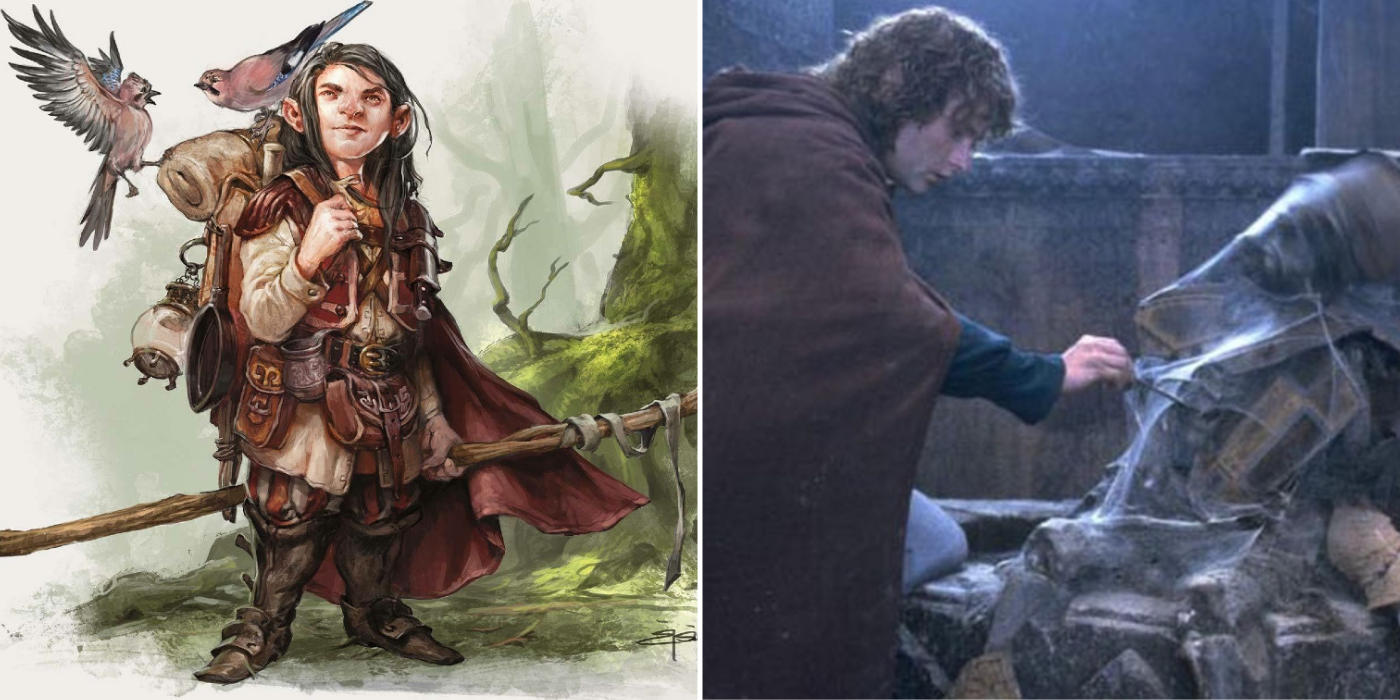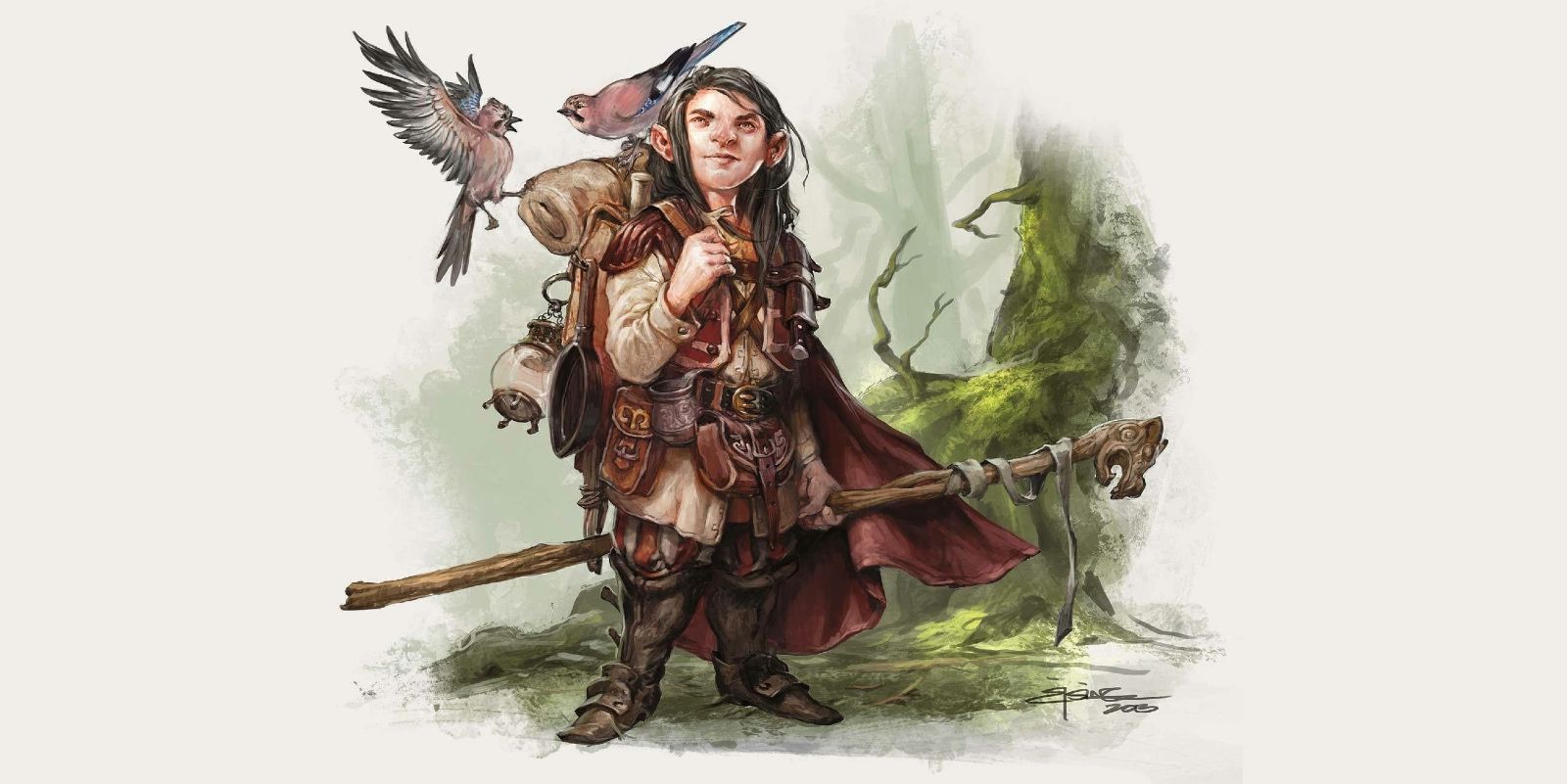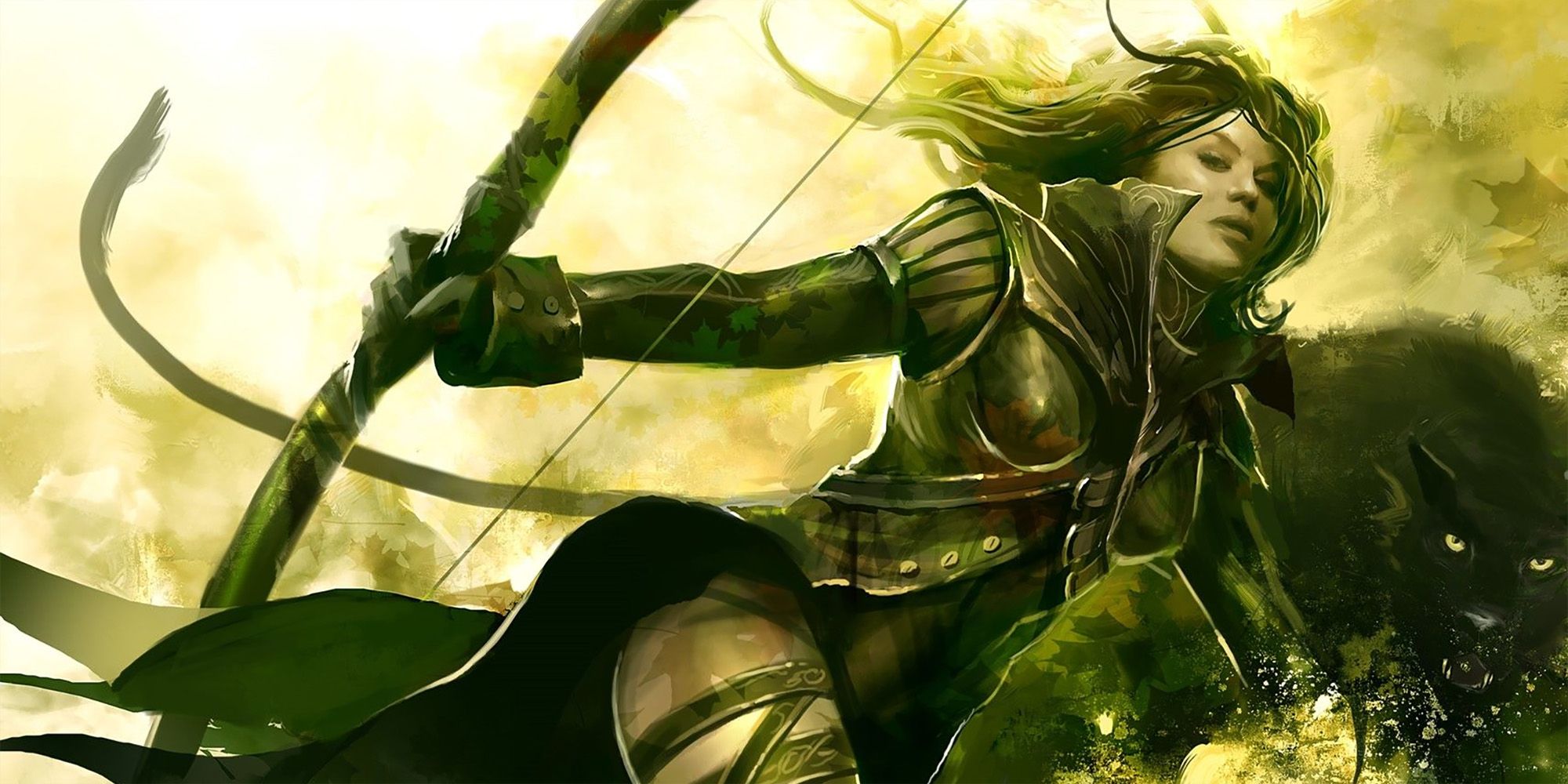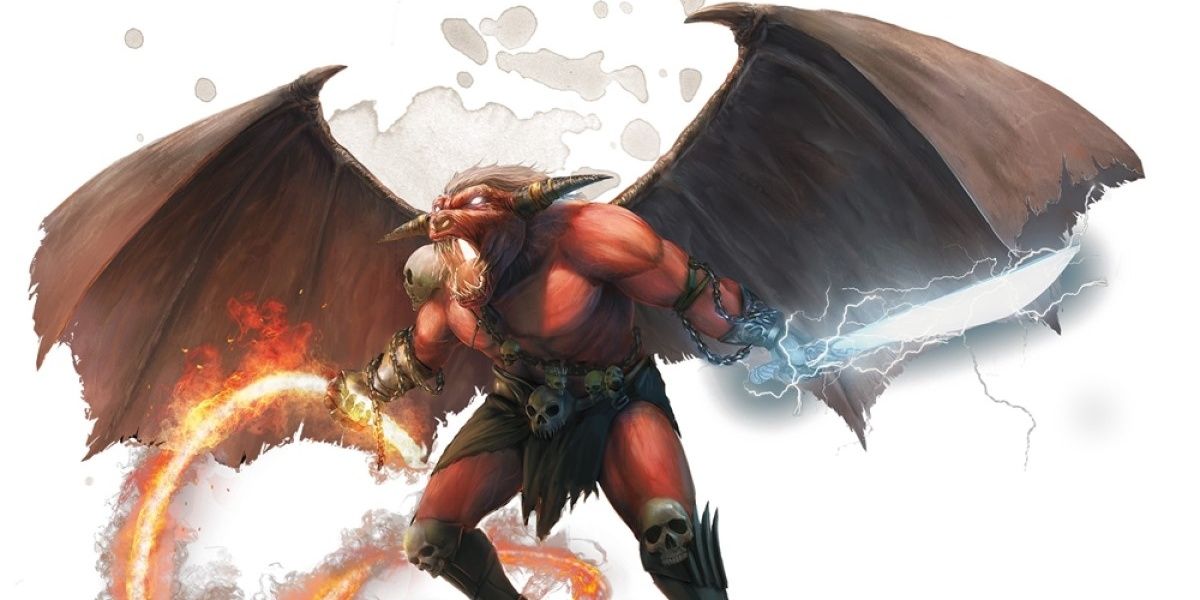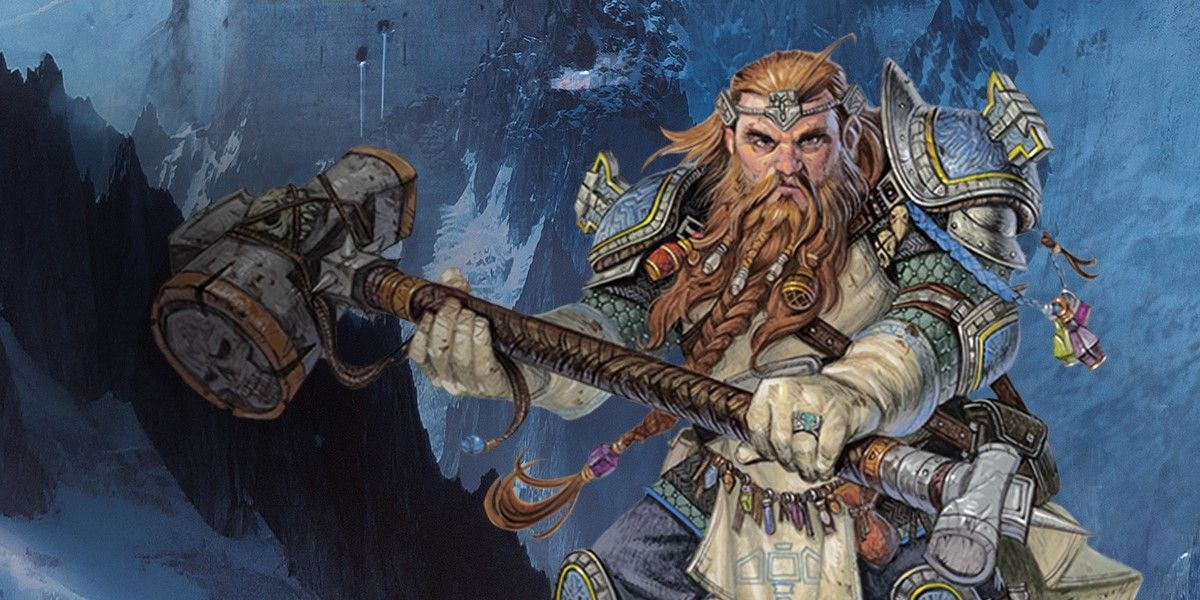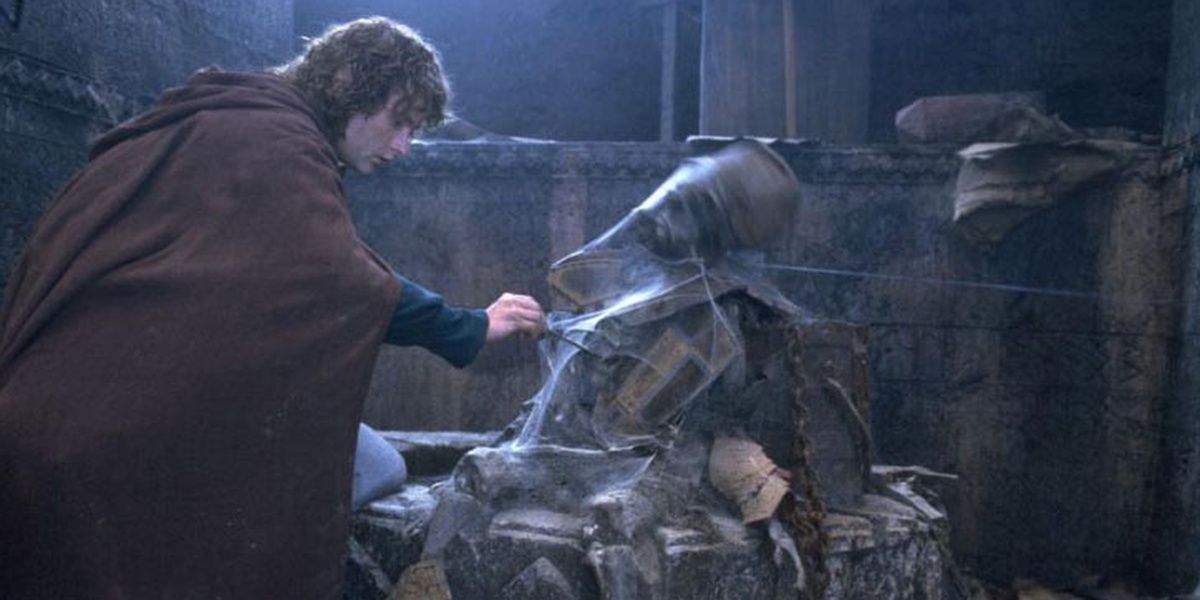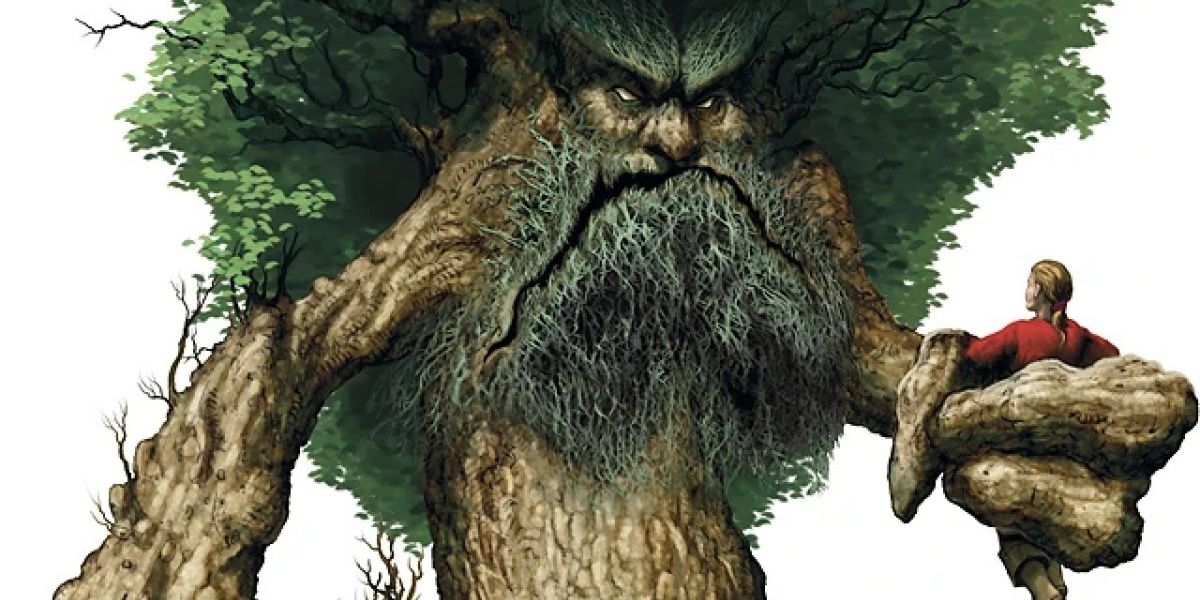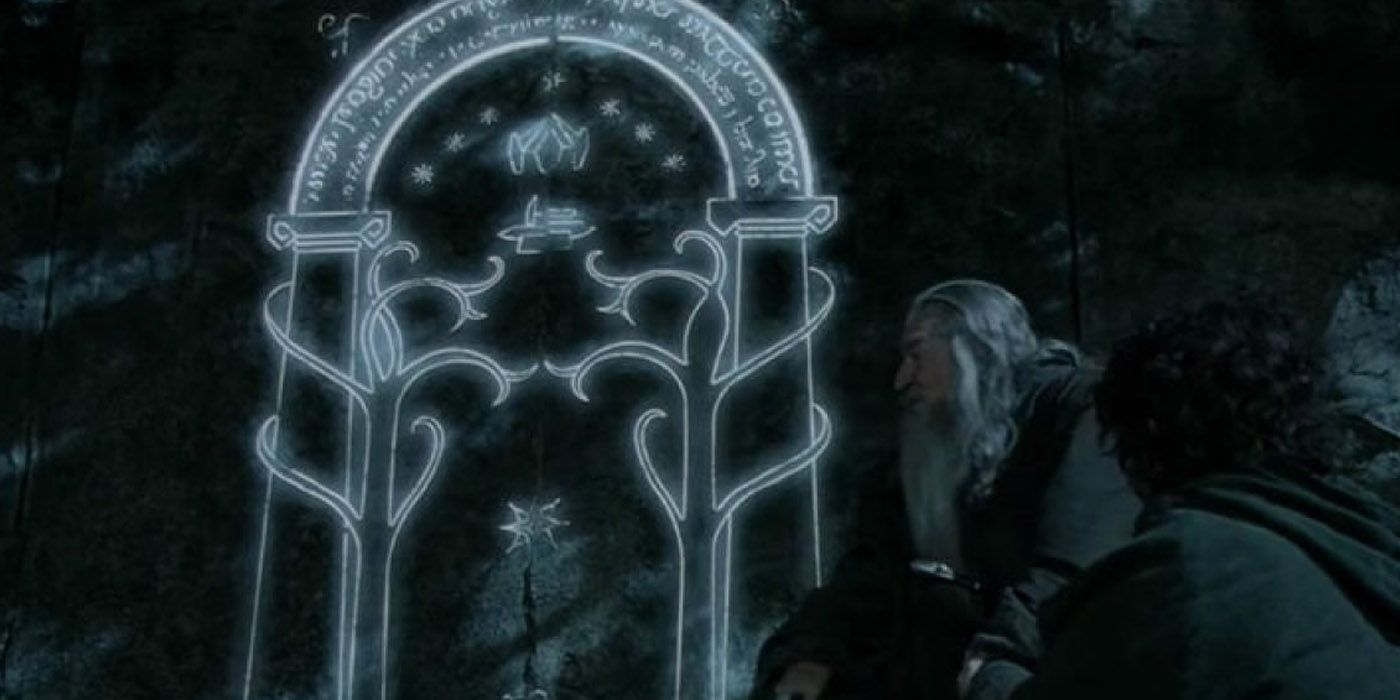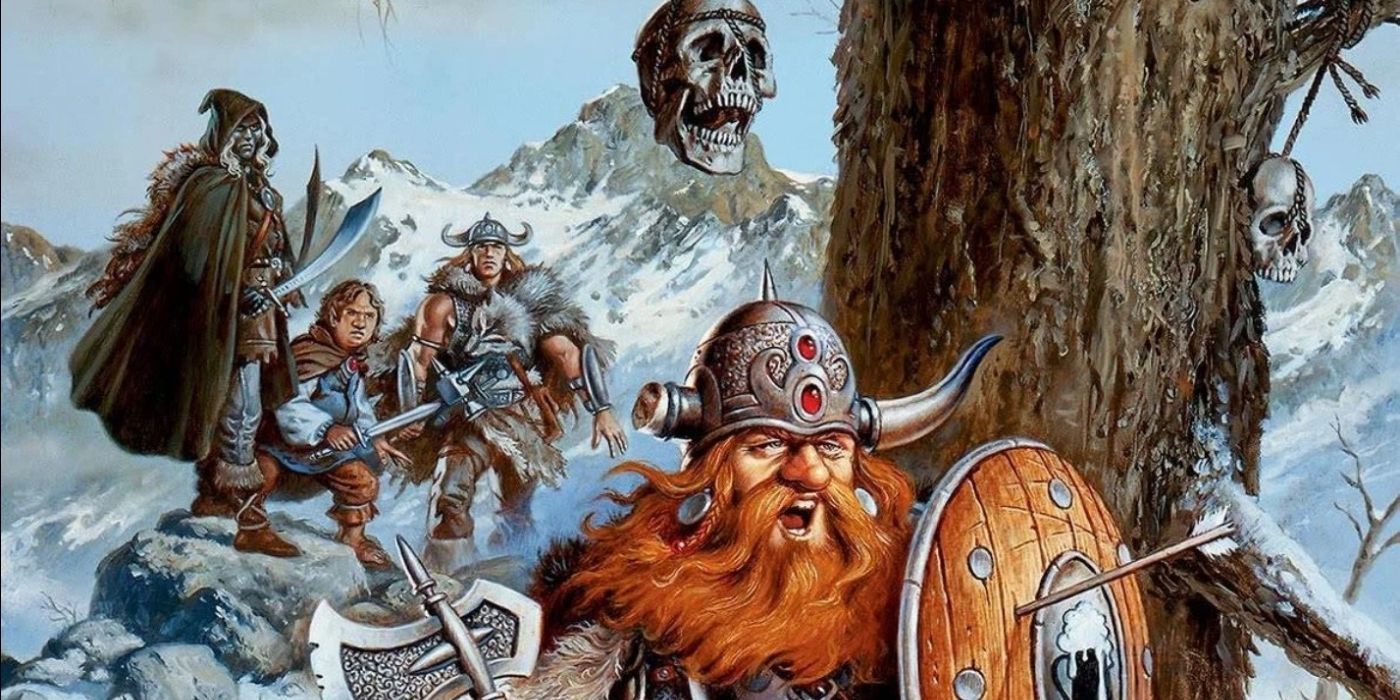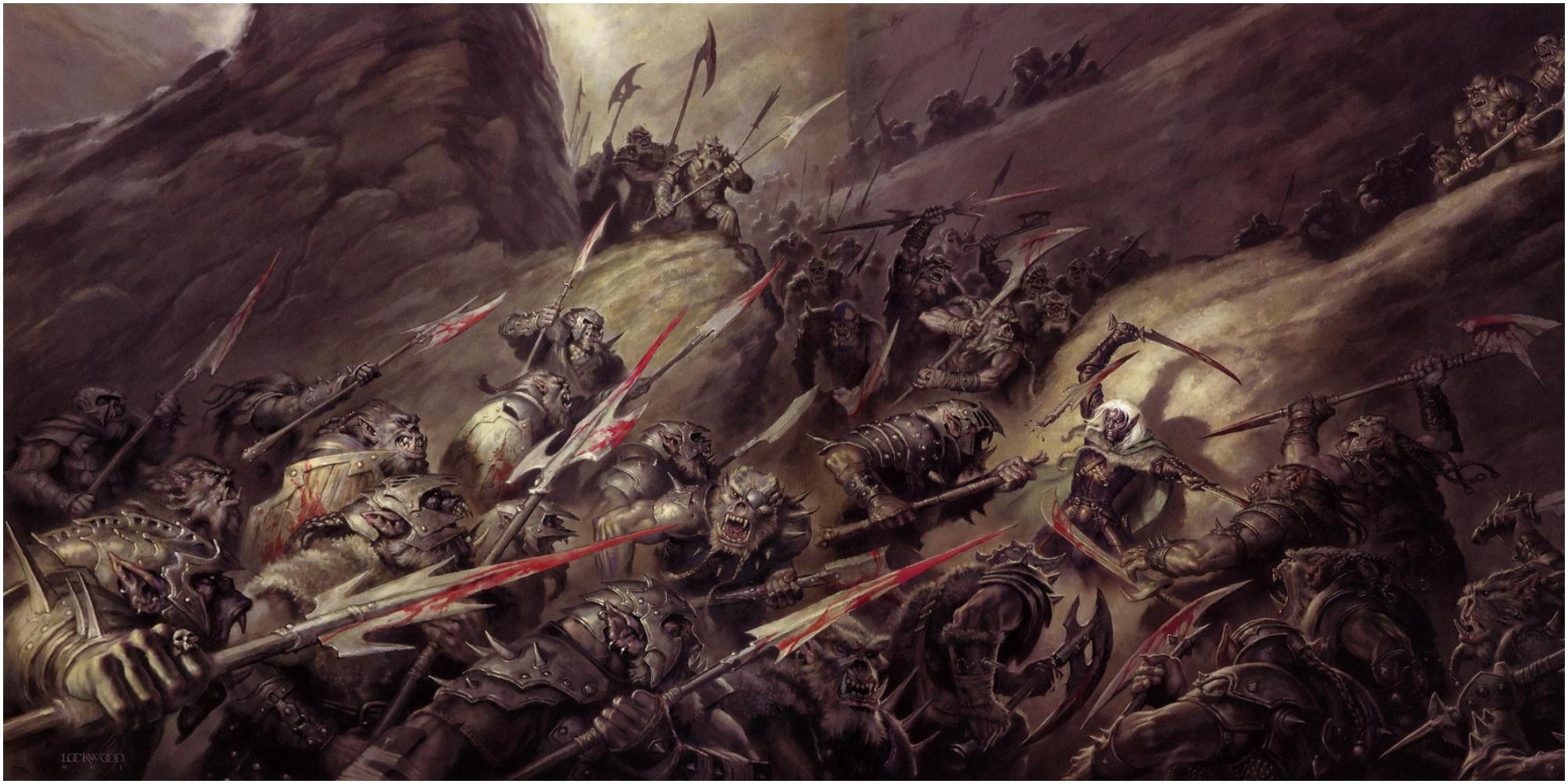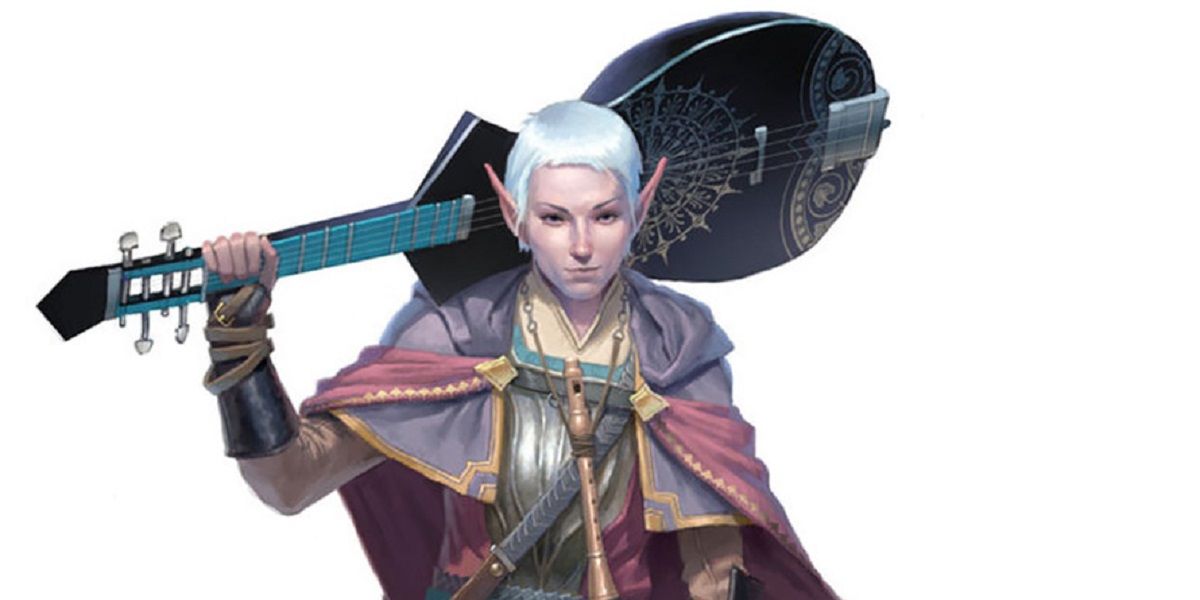The Lord of the Rings trilogy by J.R.R. Tolkien is arguably the most influential fantasy work ever written, inspiring numerous novels, movies, and games, including the popular roleplaying game Dungeons & Dragons. Many fans have recognized similarities between the two, while those who have studied the history of Dungeons & Dragons will be familiar with some ways that the game's creators "borrowed" from Tolkien.
To be clear, there's nothing inherently wrong with Dungeons & Dragons taking inspiration from Lord of the Rings. The game is all the richer and more fun because it drew upon the greatest fantasy books ever written, just as Tolkien's epic was enriched by his love of existing sources. That said, fans of both will no doubt be interested to see how the world's most popular tabletop RPG was influenced by Tolkien's literary masterpiece.
10 Halflings Are Just Hobbits
Many of the classic fantasy races in Dungeons & Dragons can be found in Tolkien. In fact, even using the word "race" to describe these different species is something Tolkien frequently used in his writing.
Elves and dwarves were common fantasy characters before Tolkien, but there's no denying that halflings were directly inspired by hobbits. In fact, the word "halfling" is frequently used throughout Lord of the Rings. Early editions of Dungeons & Dragons even used the word "hobbit," though they were eventually forced to stop.
9 Rangers Are Inspired By Aragorn
At the start of every new campaign, players must choose a race and a class for their character. One such class is the ranger, an experienced hunter and tracker who travels through the wilds, stalking their prey with a bow or pair of swords.
Many are aware that the Lord of the Rings character Aragorn is a ranger who uses a sword and travels through the wilderness, and the similarity is more than a coincidence. In his article "Tolkien & Dungeons & Dragons" at The Artifice, Professor Jeff MacLeod notes that the Advanced Dungeons & Dragons Players Handbook originally included a rule stating that a second-level ranger would become a "strider." Aragorn's nickname is Strider.
8 Balors Were Originally Just Called Balrogs In Gygax's Notes
The two people credited with inventing Dungeons & Dragons are Dave Arneson and Gary Gygax. Of the two, Gygax is often described as the more visionary, taking the war games that Arneson was tinkering with and fleshing them out with historical and fantasy elements.
Balors are powerful monstrous demons with wings and fiery whips. While Gygax "invented" these, they are directly inspired by the Balrog that appeared in The Fellowship of the Ring. In fact, Gygax even wrote "Balrog" in his personal notes when listing demons.
7 Mithril Is A Strong Dwarven Metal That Tolkien Created
Mithril is a fantasy metal created by Tolkien. The dwarves of Middle Earth mined this rare silvery ore from deep in the mountains, turning it into fantastic weapons and armor. The metal is incredibly rare and is far more valuable than gold or gemstones.
In various works of Dungeons & Dragons, a more-or-less identical metal is referred to as "mithril," "mithral," or, for some reason, "true metal." Surprisingly, the metal appears in numerous other fantasy series too.
6 The Dwarven Cities Gauntlgrym And Mithral Hall Are Suspiciously Similar To Moria
There is an ancient city beneath the earth where the dwarves mined mithril and created many wondrous items in their forges. Then, the dwarven king was driven out, and his people were sent into exile. This great dwarven realm was called Moria, or at least it was in Tolkien's works.
In the Forgotten Realms campaign setting, there is a realm of an almost identical description called Gauntlgrym. Also, there is another such lost dwarven realm that happens to have the oh-so-very-original name Mithral Hall.
5 Treants Are Based On Ents
It turns out the Tolkien estate was not exactly thrilled about all the parts of Lord of the Rings that were incorporated into Dungeons & Dragons. In 1985, Gary Gygax published an article in issue 95 of Dragon magazine entitled "The Influence of J.R.R. Tolkien on D&D and AD&D Games." Here, he insisted that he was more influenced by real history and the Conan stories of Robert E. Howard. However, he did admit to taking Tolkien’s concept of "ents," as tree people are known. He admitted to other influences too, but tried to justify many of these in different ways.
The Tolkien estate sued over copyright infringement. When the dust settled, "treants" became the word used in place of "ents." Also, Balrogs have since been renamed balors and the word "hobbit" stopped appearing in Dungeons & Dragons books.
4 The Door To Mithral Hall Is Clearly Based On Durin's Doors
One of the most famous scenes in The Fellowship of the Ring takes place when the characters come to a hidden door in the mountainside that will lead them into Moria. The door is only visible in moonlight and to enter through to the city within, the characters must speak a password.
That also happens to be the setup for entering the Underdark, which takes characters into the caverns below the earth to help reclaim Mithral Hall in the novel Streams of Silver by R. A. Salvatore. That must just be a coincidence, right?
3 The Novel Streams Of Silver Borrows A Lot From The Hobbit
The Legend of Drizzt by R. A. Salvatore is probably the most popular series of Dungeons & Dragons novels ever written. The second Drizzt book that Salvatore wrote, Streams of Silver, has many similarities to the plot of Tolkien's The Hobbit. Here are some events that happen in both books.
A group of adventurers help a dwarven king reclaim his lost ancestral home. Said home has been taken over by a dragon. The dwarf's grandfather was king before their people were driven out. The halfling character is a thief with a piece of magic jewelry. The adventurers stop to rest at a city and are aided by an elven noble of great renown. A secret magic door allows the characters to enter the subterranean stronghold to the lost kingdom. The sleeping dragon learns of the intruders and attacks. The dragon is shot by a special arrow. The king of the dwarves falls in battle at the end of the book. There are probably other similarities worth including here, but players and readers alike get the idea.
2 People Weren't Talking About Orcs Before Tolkien
In Tolkien's works, goblins are frequently referred to as orcs. To be clear, Tolkien did not invent orcs, but before he popularized them, the term was obscure and had a less clearly defined interpretation.
Many fantasy works have used the word "orc" over the years. While they are technically a distinct race from goblinoids in Dungeons & Dragons, in many ways, they're basically just taller tougher goblins.
1 Half Elves Are Loosely Based On Elrond Half-Elven
Among the most popular player races is the half-elf. If the name does not make it obvious, a half-elf is the child of an elf and a human. YouTuber and Dungeons & Dragons enthusiast Matthew Coleville has a video series on the history of every edition of the game, where he takes people through making characters in each edition as he adds historical context. If this sounds dull, it's not.
One thing he notes is that Gygax had a complicated relationship with Tolkien's works, and that the half-elf race was loosely inspired by the character Elrond Half-elven. While Elrond is one of the most iconic beings in Middle Earth whose mixed heritage is considered worthy or notable, Dungeons & Dragons made love between human and elves so commonplace that half-elves are a playable race any player can choose. In a strange way, this shows how magic has become commonplace in this new game.

